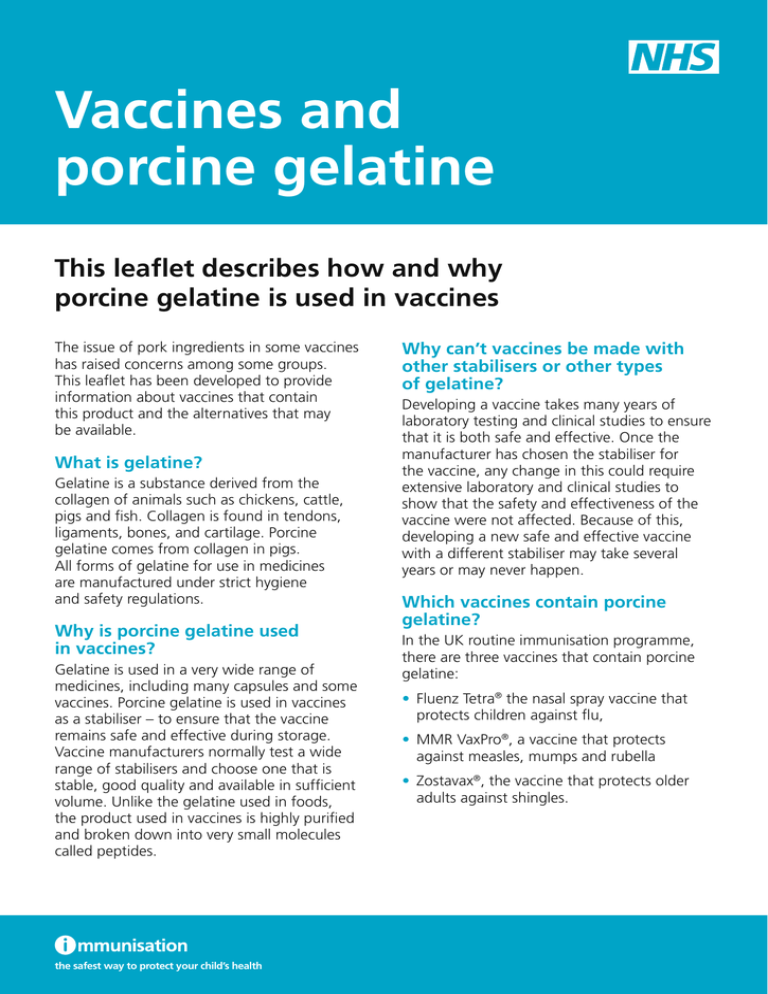
On average, Surgiflo-treated sites required 63% less product applications than Hemoblast-treated sites (1.26 ± 0.0.51 vs. Surgiflo-treated lesion sites achieved hemostasis in 77.4% of cases following a single product application vs. Surgiflo demonstrated significantly higher hemostatic efficacy and lower TTH ( p < 0.01) than Hemoblast. Secondary endpoints included the number of product applications and the percent of product needed from each device to achieve hemostasis. Primary endpoints included hemostatic efficacy measured by absolute time to hemostasis (TTH) within 5 min. Surgiflo and Hemoblast were randomly tested in experimentally induced bleeding lesions on the spleens of four pigs.
#Porcine gelatin effecra plus#
In the present study, we compared the hemostatic efficacy of SURGIFLO ® Hemostatic Matrix Kit with Thrombin (Surgiflo-flowable gelatin matrix plus human thrombin) to HEMOBLAST™ Bellows Hemostatic Agent (Hemoblast-a combination product consisting of collagen, chondroitin sulfate, and human thrombin). The differences in biological response between investigated construct types emphasises the necessity to characterise and standardise biomaterials before translating in vitro tissue engineering research to preclinical applications for articular cartilage injuries.Topical hemostatic agents have become essential tools to aid in preventing excessive bleeding in surgical or emergency settings and to mitigate the associated risks of serious complications. In summary, hydrogel constructs prepared with bovine-derived GelMA and photocrosslinked with Irgacure 2959 and 365 nm light displayed properties most similar to native articular cartilage after 28 days of cell culture.
#Porcine gelatin effecra free#
A reduction in cell viability was noted in all samples at day 28, potentially due to the generation of free radicals during photocrosslinking or cytotoxicity of the photoinitiators. mPCL reinforcement correlated with increased accumulation of collagen I and II in B-IC, B-LAP and P-IC groups compared to non-reinforced hydrogels. Gene expression analysis revealed upregulation of chondrogenic marker genes in IC-crosslinked groups, whilst dedifferentiation gene markers were upregulated in LAP-crosslinked groups. Compressive moduli correlated with an increase in total glycosaminoglycan (GAG) content for each group. The compressive moduli of all groups increased after 28 days of cell culture, with B-IC displaying similar compressive strength to that of native articular cartilage (∼1.5 MPa).

Bulk physical properties, cell viability and biochemical features of hydrogel constructs were measured at day 1 and day 28 of chondrogenic cell culture. Chondrocyte-laden hydrogels reinforced with multiphasic melt-electrowritten (MEW) medical grade polycaprolactone (mPCL) microfibre scaffolds were prepared using bovine (B) or porcine-derived (P) GelMA, and photocrosslinked with either lithium acylphosphinate (LAP) and visible light (405 nm) or Irgacure 2959 (IC) and UV light (365 nm). The purpose of this study was to determine the effects of gelatin source and photoinitiator type on the redifferentiation capacity of monolayer-expanded human articular chondrocytes encapsulated in GelMA/hyaluronic acid methacrylate (HAMA) hydrogels. However, a lack of characterisation and standardisation of fabrication methodologies for GelMA restricts its utilisation in surgical interventions for articular cartilage repair. Gelatin methacryloyl (GelMA) hydrogels are a mechanically and biochemically tuneable biomaterial, facilitating chondrocyte culture for tissue engineering applications.


 0 kommentar(er)
0 kommentar(er)
